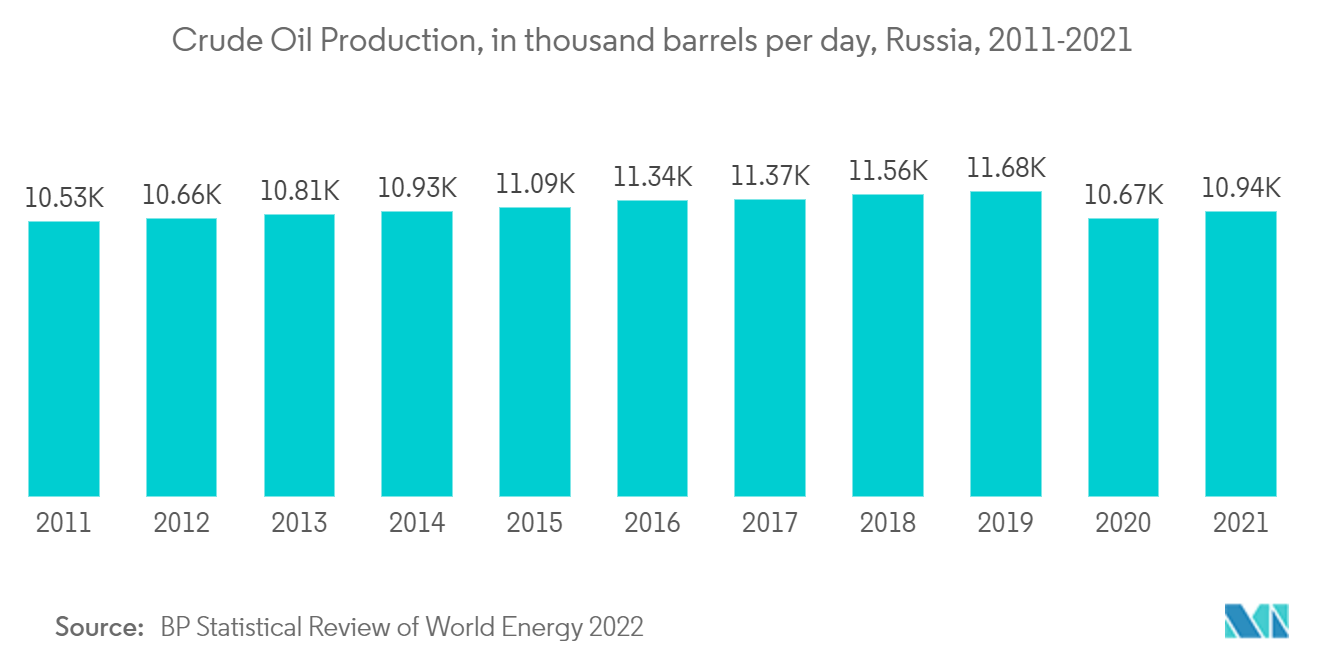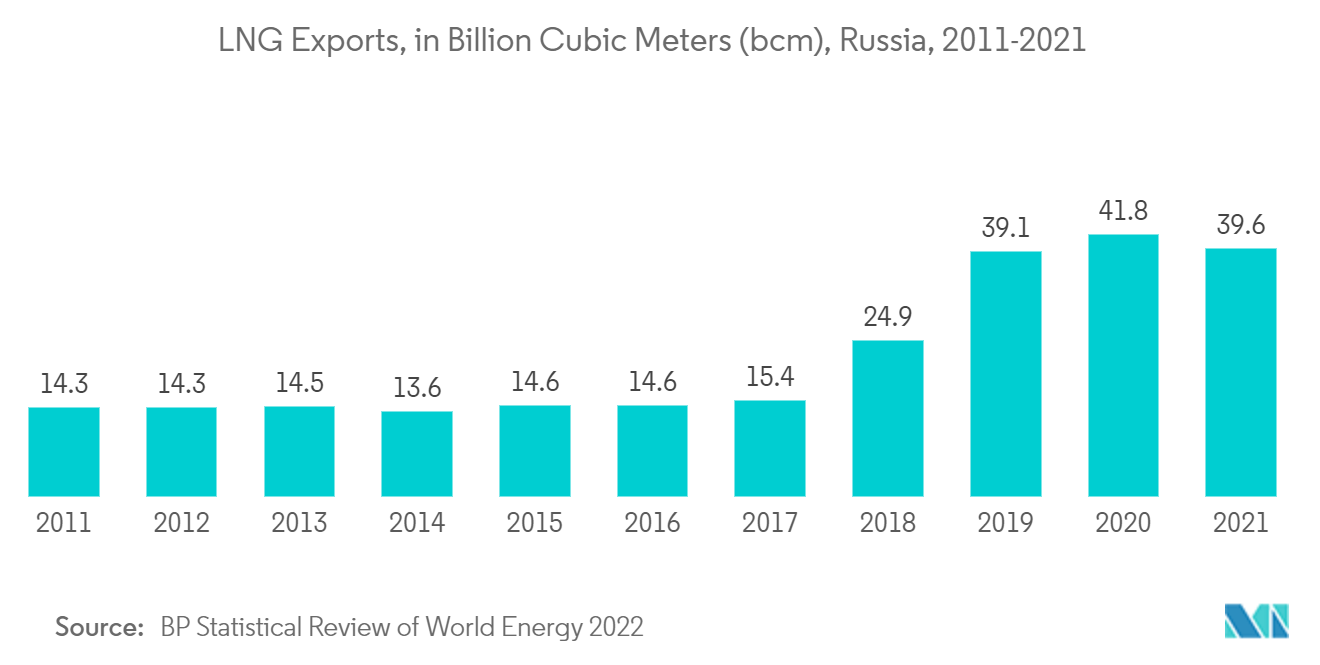Market Trends of Russian Federation Oil and Gas Industry
This section covers the major market trends shaping the Russian Federation Oil & Gas Market according to our research experts:
Upstream Segment Expected to be the Fastest-growing Market
- For the past several years, Russia has been among the top three oil and gas producers in the world. Most of the country's oil and gas is exported to other countries, making oil and gas a significant source of revenue generation.
- Russia, with the most abundant gas reserve in the world, comprising 19.8% of the global gas reserve, is also the second-largest gas producer, behind the United States. With countries worldwide aiming to reduce carbon emissions by phasing out coal-based power plants, the growing electricity demand and the natural gas demand for power generation are expected to increase.
- In 2021, the total crude oil production in Russia was 10.944 thousand barrels per day, which was higher than that of 2020, i.e., 10.667 thousand barrels per day. The increasing production of oil and gas in the country may positively impact the Russian Federation oil and gas market.
- The ban on technology purchases from the United States has made it hard to develop complex shale and offshore projects. This factor has led to a shift from western technological partners to south and east for assistance and technological support. In recent years, Chinese companies have been active in Russia in the exploration activities in offshore fields. Gazprom Neft has also been in active talks with Chinese companies to develop the Chona project in Eastern Siberia.
- Therefore, owing to such factors, upstream is likely to be the fastest-growing segment for the Russian Federation oil and gas market during the forecast period.

Increasing Downstream and Midstream Projects Expected to Drive the Market
- Oil and gas pipelines, storage, LNG, RLNG facilities, oil refineries, and raw natural gas purifying facilities are the significant midstream and downstream sectors. The growing oil and gas production and export and aging pipeline infrastructure have driven the demand for new midstream investments. The increasing oil and gas production and a rising number of expansion and modernization projects have driven the demand for the downstream segment of the Russian oil and gas market.
- Russia has been planning to launch several new projects over the next few years, aiming to capitalize on the downstream sector's rapid growth. The Russian government is also planning to take further measures to encourage the petrochemical industry development, with a target of doubling production to around 20 million metric ton per year by 2030.
- In 2021, the total LNG exported from Russia was 39.6 billion cubic meters (bcm), significantly higher than the country's exported value of 2011, i.e., 14.3 bcm. This increase exhibits a rise in the demand for LNG in the international market, which may positively impact the country's oil and gas market.
- However, due to the various sanctions imposed on Russia by the European Union and the United States, the future of LNG in the country is highly uncertain. Several international companies like TotalEnergies SE, BP PLC, Shell PLC, and ExxonMobil have ceased all operations in the country.
- The increasing number of projects in the downstream and midstream segment are expected to drive the Russian Federation oil and gas market during the forecast period.

